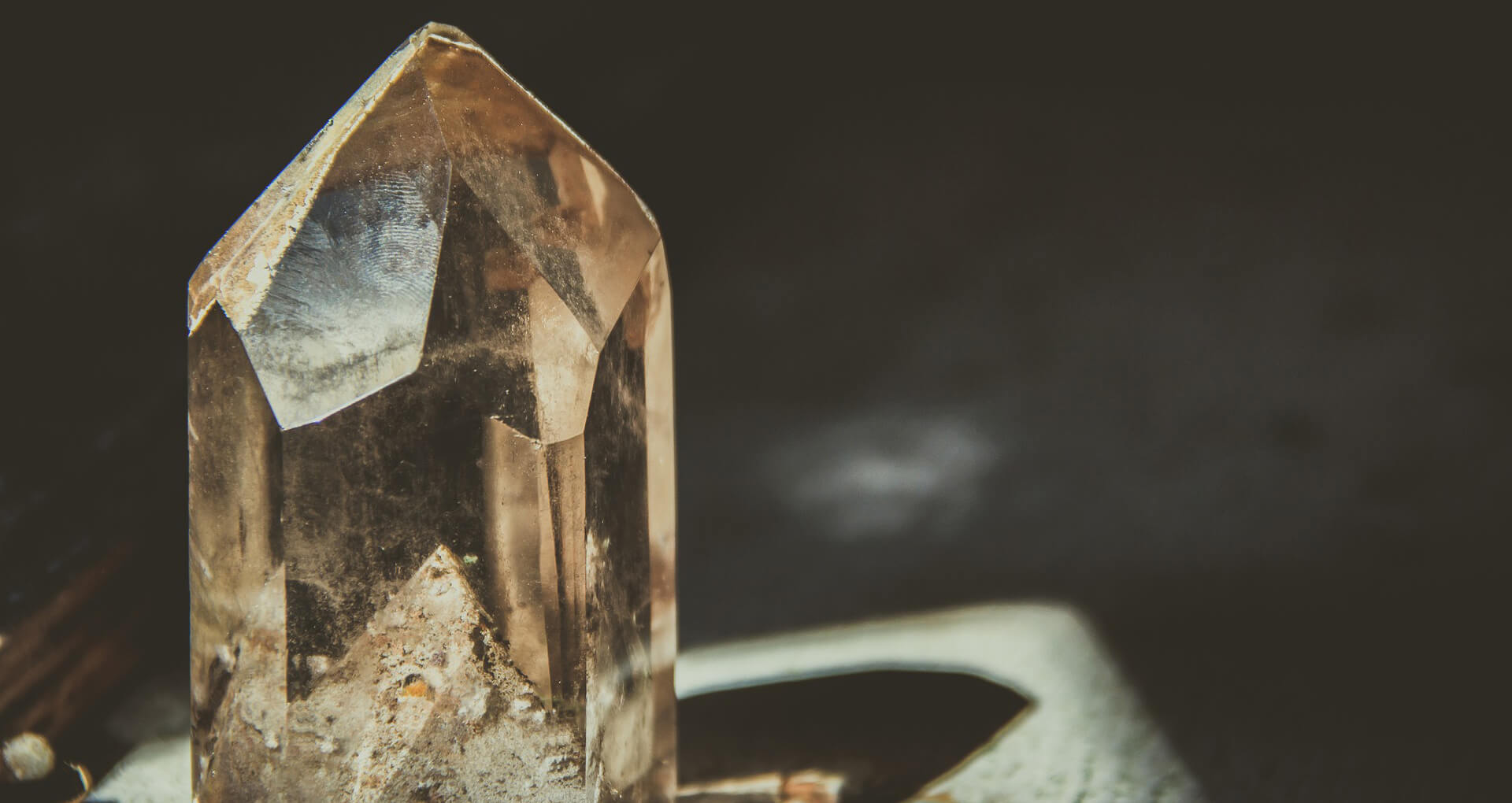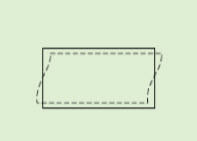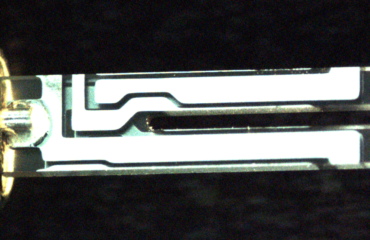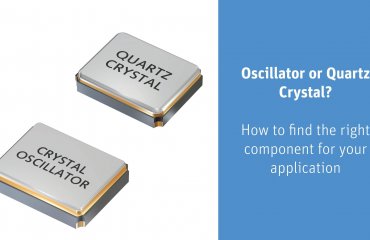
Whether medical technology, telecommunications or consumer electronics, quartz crystals have established themselves as a precise frequency generator in all industries. When energized, the thin quartz disc oscillates at a steady rate and thus determines the heartbeat of the application. While this sounds simple, the matter is quite complex because quartz blanks are not all the same.
The quartz blanks not only differ in thickness, but also in temperature coefficient and vibration behavior. If, for example, the surrounding temperature changes slightly, the stability of the frequency generated by the quartz can be negatively affected. The more the temperature changes, the stronger is the deviation from the desired frequency.
Quartz crystals also differ in the way they vibrate. The “longitudinal oscillator” stretches along its longitudinal axis; like a rubber band being stretched. “Bending U-tube” quartz crystals, on the other hand, oscillate mainly in the middle of the blank. They behave like a bowstring that is alternately tensioned and relieved. However, the most common type of oscillation is the “thickness shear oscillator”. As shown in the figure, the upper and lower sides of the blank move in opposite directions, while the quartz disc simultaneously changes its thickness.

Thickness Shear Oscillator
AT Cut Defines Vibration Type and Temperature Coefficient
Both characteristics, the temperature coefficient and the oscillation type of the quartz, can be specifically influenced in the production process. The decisive factor is the cutting angle at which the quartz disc is removed from the crystal. Quartz crystals are cut to size based on mathematical calculations, and any change can cause serious repercussions to the quality of the part.
One of the most common angular cuts is the AT cut, which is used in the production of all Jauch crystals. This cut is made at 35 degrees from the Z-axis of the quartz crystal and is one of the most commonly selected cutting angles. Quartz blanks produced in this way have a good temperature coefficient. In the temperature range between -40 and 85 degrees Celsius, precise frequencies can be generated with a deviation of only +/- 15 ppm (ppm = parts per million) thanks to the AT cut. Used in an oscillator with additional temperature compensation (TCXO), these AT-blanks guarantee an even higher frequency stability of up to +/- 0,5 ppm.
The Pillow Shape of Quartz
All quartz crystals produced with the AT cut are thickness shear oscillators – a great advantage for further processing. Quartz crystals are passive components, without external voltage they are completely useless. Fine electrodes must be attached to the quartz to energize it and make it oscillate.
The attachment of these electrodes, however, proves to be a great challenge, depending on the type of oscillation. Ideally, the electrodes should be attached to a point on the quartz where it deforms only minimally, even under voltage. This is much easier with a thickness shear oscillator than with the bending or longitudinal oscillators mentioned at the beginning.
Nevertheless, a further processing step of the quartz is also necessary. In a special lapping machine, the blanks are ground until they assume the shape of a cushion – slightly thicker in the middle and tapering outwards. The quartz holder is attached to the tapered ends. Secured in this way, thin metal electrodes are finally evaporated onto the thicker middle section of the blank.
The AT cut thus fulfils a double function in quartz production. First, it ensures high frequency stability in the temperature range from -40 to 85 degrees Celsius and second, it defines the shape of the blank as a thickness shear oscillator.


 Deutsch
Deutsch 




I believe I have found something interesting. It’s a paper my father did in college in 1951. It’s called “The IT (Ives-Theta) Cut. It seems to be a better version of the AT cut that adapts to temperature. Have you heard of this?
”
In many radio applications. however, the ambient temperature reaches as high as 100c where
the tendency of the AT cut changes rapidly with temperature. Consequently, there has arisen a need for a quartz resonator which has a zero temperature coefficient at frequency at a higher temperature.” is one of the lines. another says, “As predicted by the theoretical analysis this new plate has a zero temperature coefficient at higher temperatures than the AT.”
It includes all the sketches, math, and descriptions of this process. I have a copy of the PDF from the Fort Collins Library.
Are you guys interested?
Hello Jon,
Thank you very much for your interesting email. In fact it would be interesting for us to read and learn more about the IT Cut. We´d be happy if you could send us a copy of the PDF. The appropriate email address is frequencyproducts@jauch.com
Best regards
Patricia